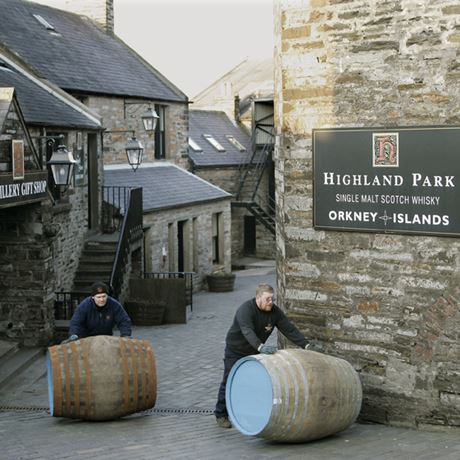Highland Park 22 Year Old 2003 Uncharted Whisky Co Park Life Single Sherry Cask #UC052 Highland Single Malt Scotch Whisky (2025) 70cl
Here is an insight into the life of an indy bottler… Sometimes fantastic liquids land on the table of small independents like us. It’s a challenge to navigate- the liquids often come with a caveat such as “this was distilled at this particular fantastic distillery but you can’t use the name on the bottles”. It’s difficult because the liquid is great, the price is great, but the customer wants transparency on what they are drinking- which is fair enough.
So then we have to put on our thinking caps and work out the best way to keep everyone happy. So here is Park Life, a short series of bottlings from a particularly delicious distiller’s repertoire in the Highland region of Scotland (if you didn’t know, all the islands of Scotland are ‘Highland’ region except Islay). This isn’t from Islay. Or Mull. Or Skye. Or Jura. Or Arran.
This liquid has been aged in a refill sherry wood. It’s not a strong sherry influence at all but the liquid is stunningly complex.
As you may notice, we have created a sister bottling to this at 20 years old from ex-bourbon wood.
This is a fantastic dram which is distillery character forward- not wood forward. We know it won’t last forever so we will simply enjoy this day in the sun.
A peat fire burns at the heart of Highland Park. An Orcadian peat fire to be precise. This is significant not just in retention of heritage, but in flavour terms.
Peat is made up from semi-decomposed vegetation laid down over thousands of years. That vegetation differs across Scotland depending on climatic condition all these millennia ago. When the peat is dried and then burned, the phenols (smoky aromas) released will have different aromas generated by this vegetation. Mainland peat is smokier because of there being more lignin from trees; Islay’s peat appears to have more marine vegetation and contains more creosol (picked up as tar); while Orcadian peat is composed entirely of sphagnum moss and heather. The result, once again, is a different aromatic spectrum, lightly smoky, but significantly more fragrant… heathery even.
The peat is burned in the distillery’s own kiln and the resulting heavily smoky malt makes up 20% of the barley used for each mash. The remainder, unpeated, comes from the mainland.
The other signature of Highland Park comes later in the process with maturation. The regime has been 100% Sherry casks since 2004, with a mix of European and American oak (as well as refill) being used. These add a layer of richness to the lightly smoky, fragrant and fruity character.

The origins of distilleries are often, as they should be, obscured by the clouds of half-truth and myth. Such is the case with Highland Park. Was it founded by famed priest turned smuggler Magnus Eunson, or by farmer David Robertson in 1798? The distillery’s ornate wrought ironwork gate certainly attests to the 1798 story.
Was it always called Highland Park or originally was it known as Rosebank, then Kirkwall and only becoming Highland Park later?
Whatever the slight mystery over its origins, it is accepted that it wasn’t until the late 19th century that Kirkwall’s then only distillery found its feet properly in the 1870s under the ownership of first William Stuart [who owned Miltonduff] and from 1885 with his business partner James Grant (previously the manager of The Glenlivet) who took full control in 1895. It was Grant who expanded the distillery twice and built up a strong relationship with Robertson & Baxter (R&B).
Highland Distillers (who had shares in R&B) took full control in 1937 and Highland Park is now part of the Edrington Group.
It first appeared as single malt in the late 1970s, as an eight-year-old, but the packaging was revamped in the 1980s (and repeatedly ever since) when the 12- and 18-year-old expressions were introduced. It soon built up a strong, even cult, following with the range expanding continually. As well as a core range with age statements, various series have been released themed around Orcadian history and Norse gods.